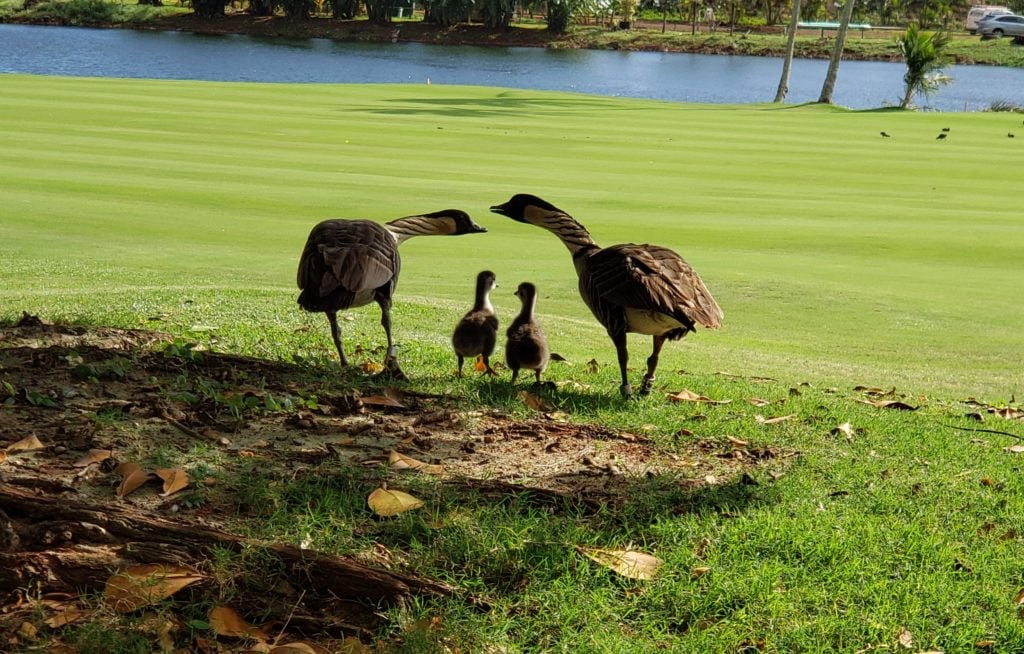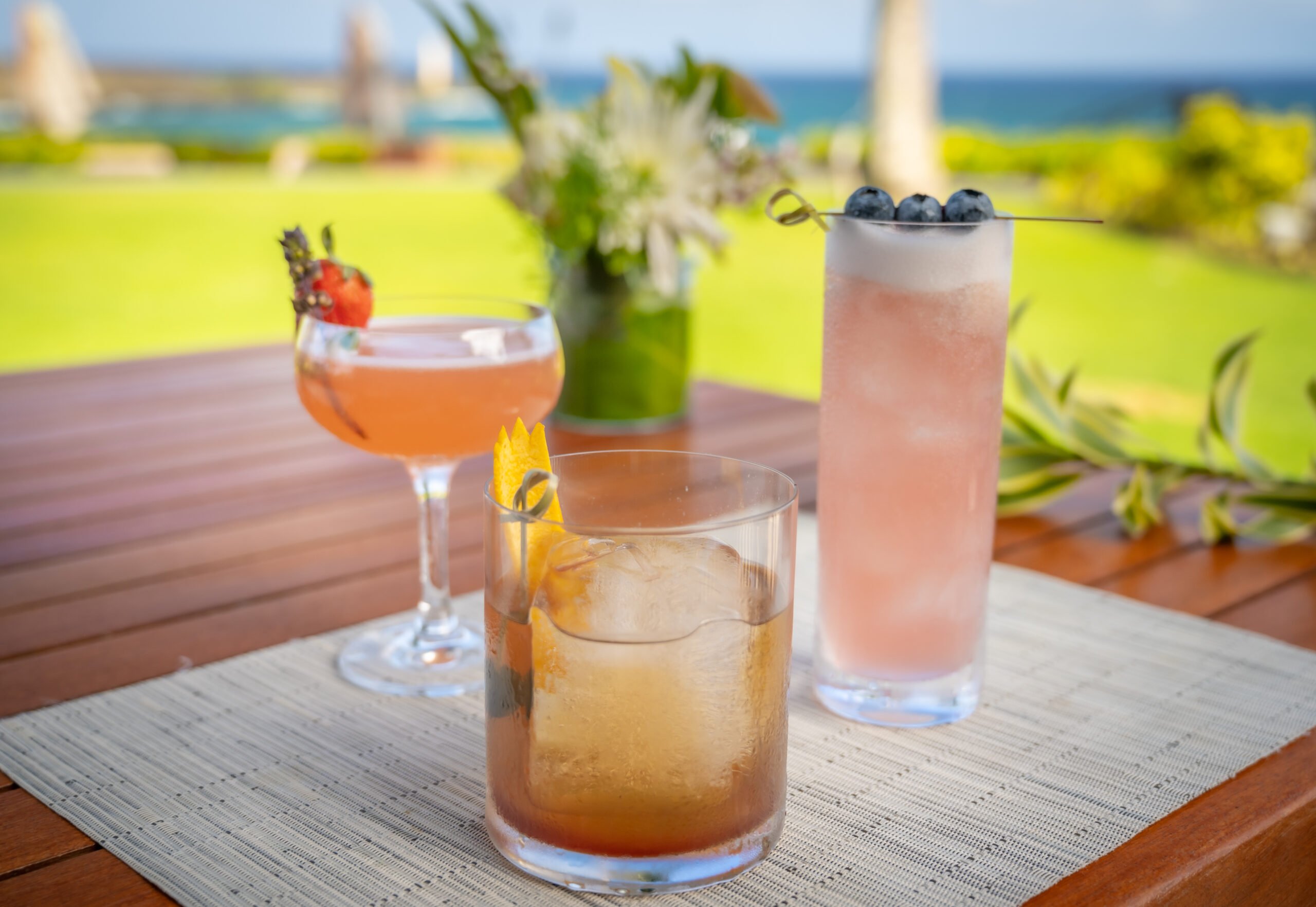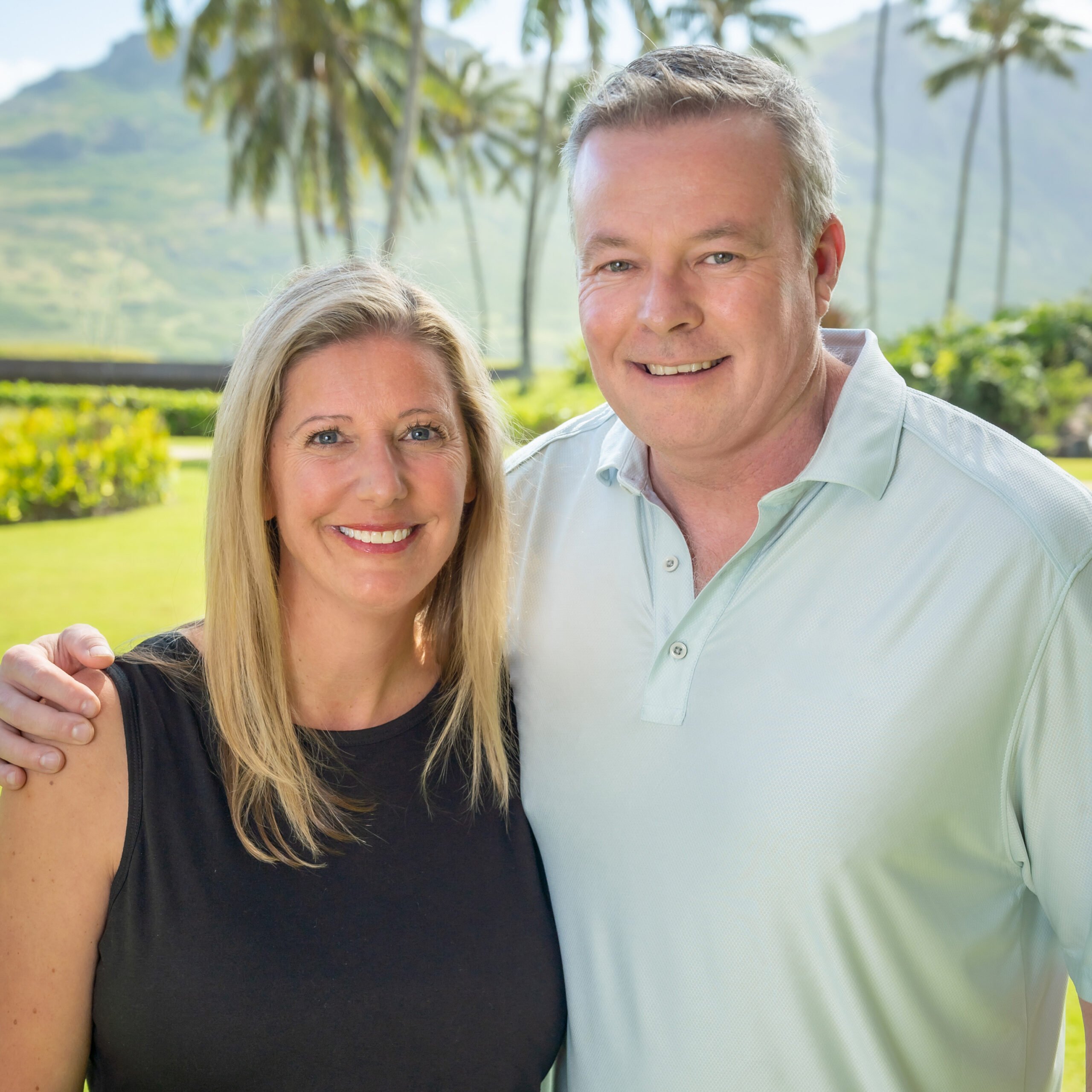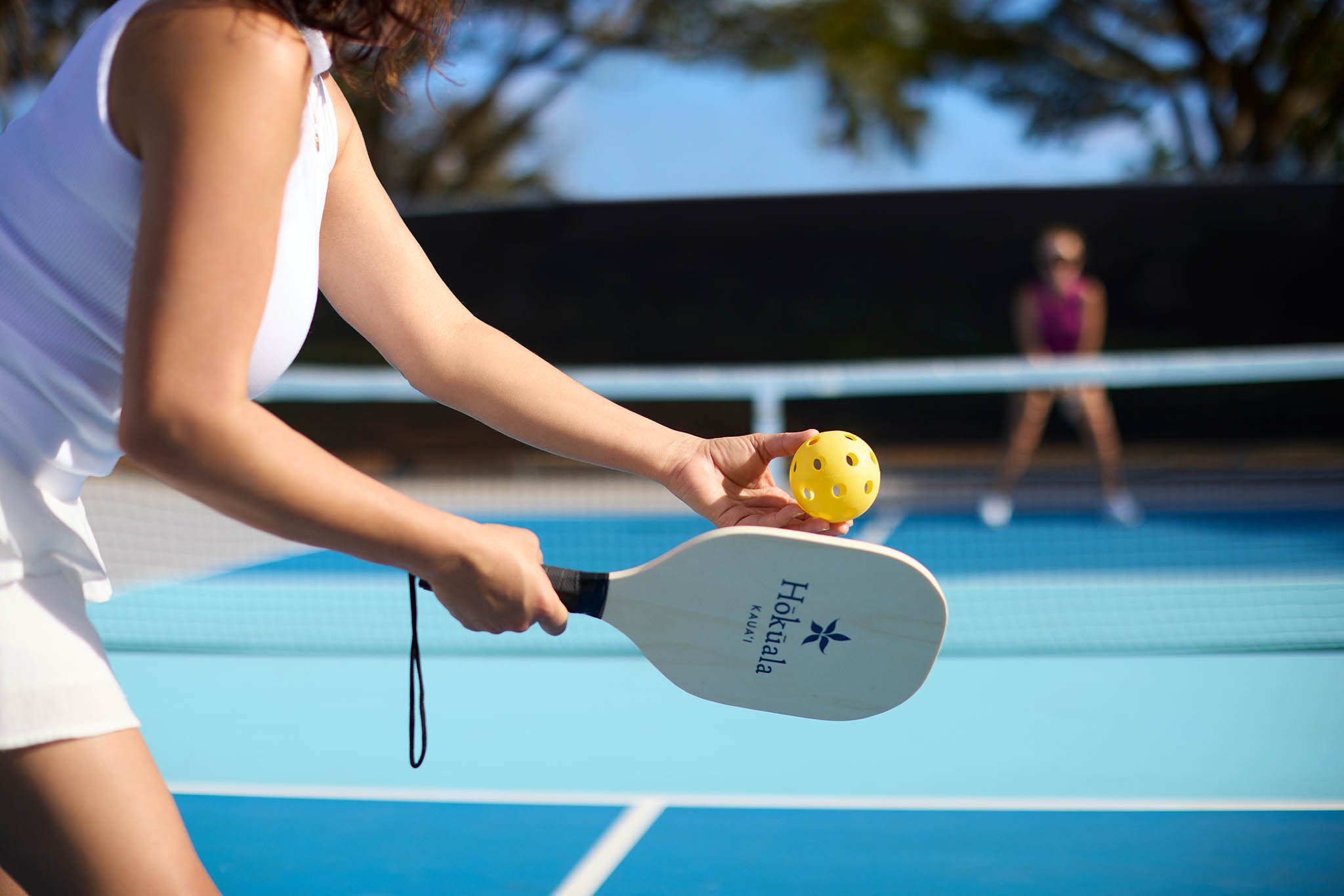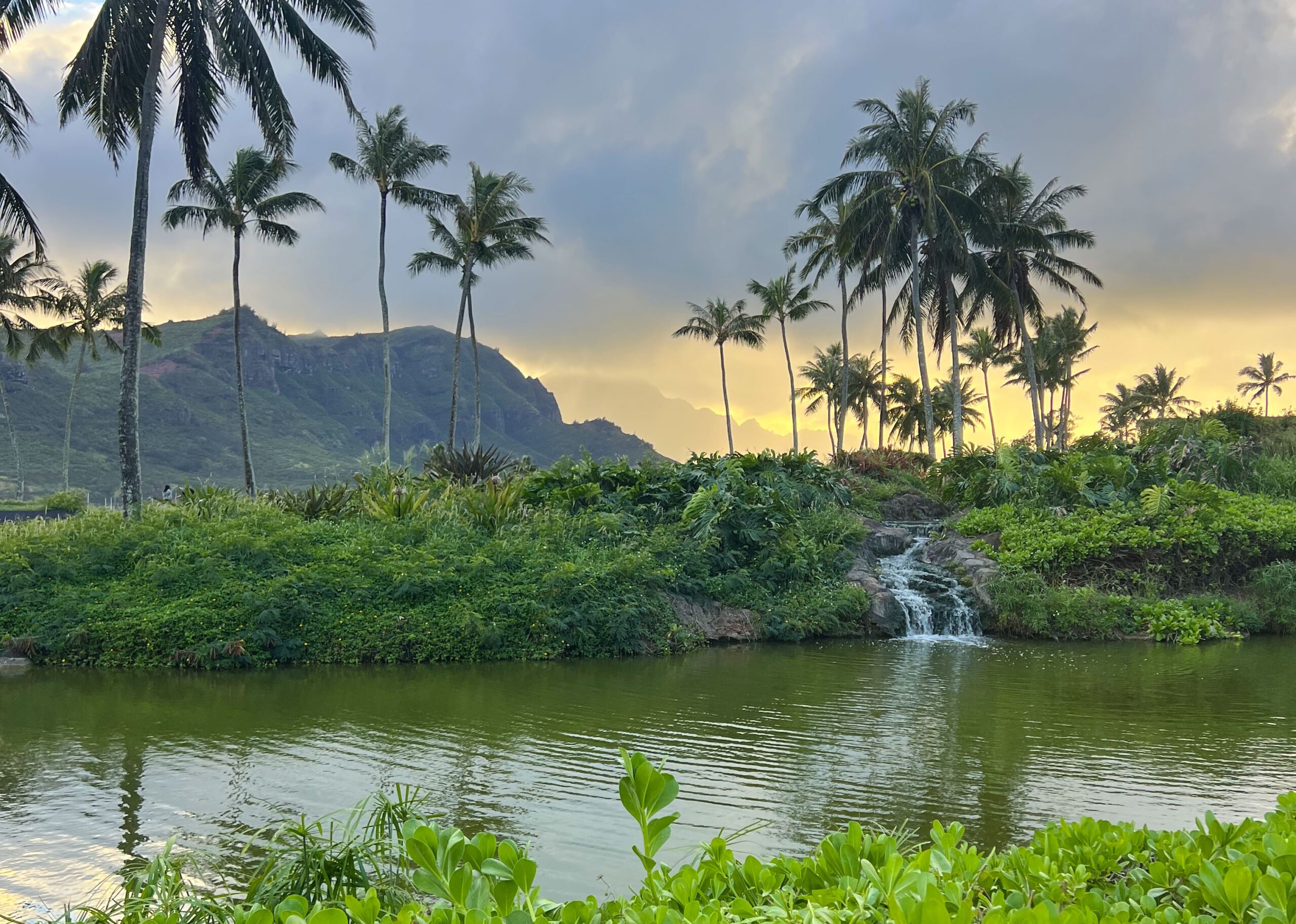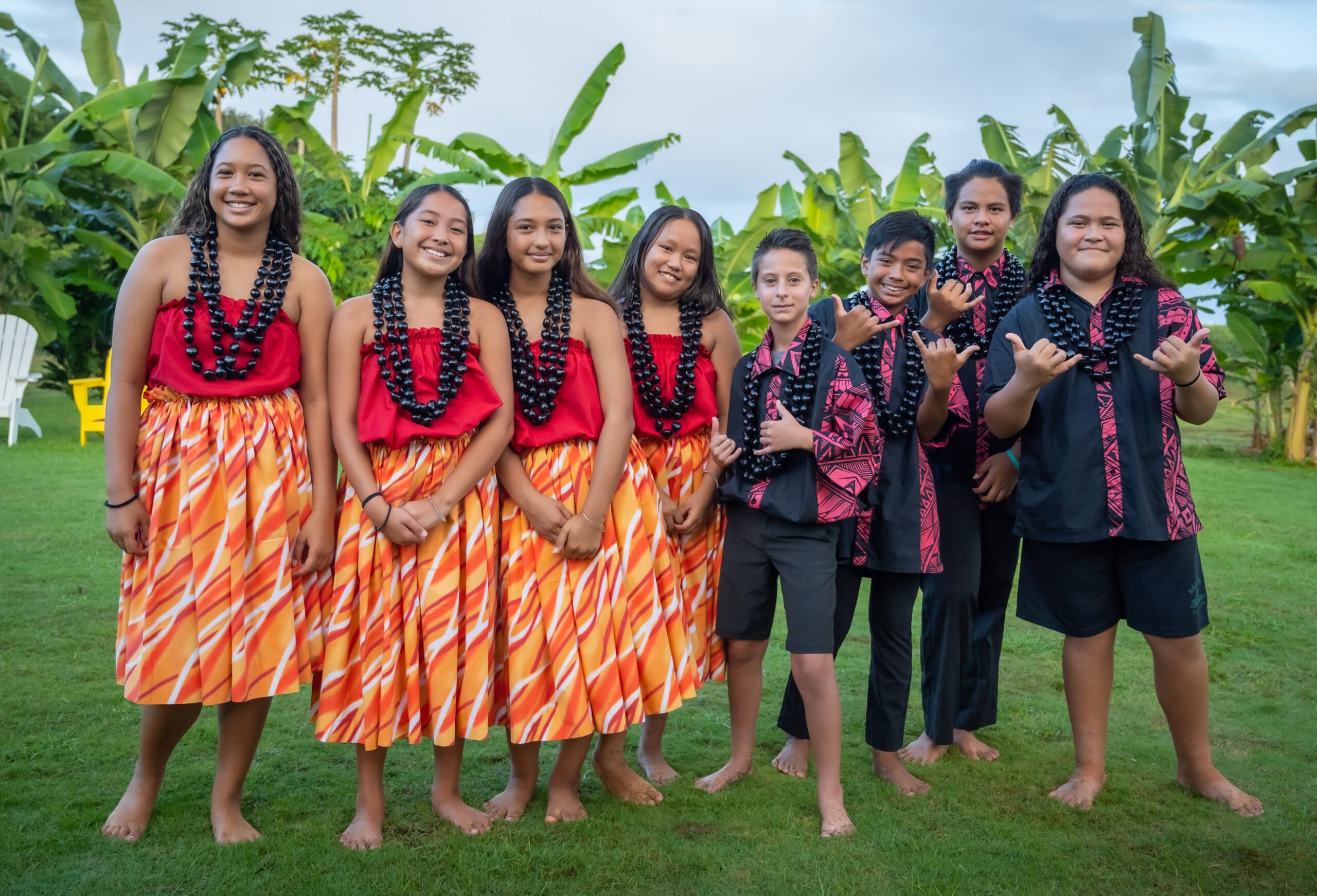Tell us about these birds.
The Nene, or Hawaiian Goose, is Hawaii’s State bird. They’ve been an important part of the Hawaiian culture and are endemic to the Hawaiian Islands. Their numbers dramatically dropped with the introduction of dogs, cats, mongoose, rats, and people. At one point the number of wild Nene were down to around 800 or so, which is why they were put on the endangered species list and became federally protected. Hawaii has lost many of our native and endemic birds, which is why so many people work so hard to protect what we have left.
Why are the Nene birds attracted to this particular property?
Many years ago Hokuala (previously known as Kaua’i Lagoons) was one of the most successful breeding grounds for the Nene, with up to 800 birds on the property. They are able to thrive on this particular property because we have all their basic needs in one convenient and gorgeous place. We have the foods they like to eat, the water and ponds they like to swim in, a decent amount of nesting areas, safe places for them to raise their goslings, a very limited number of predators and a team dedicated to the health and safety of the Nene. Kaua’i is the only island, so far, that is free of mongoose, the main predators of the Nene. As for the predators that are present on Kauai, our Bio-Tech team and the entire staff here at Hokuala/Timbers have become very proficient at keeping stray cats and dogs at bay.
Tell us a little bit about the work you do at Hokuala.
Since the Habitat Conservation Program is a Federal and State regulated program our Bio-Techs do work closely with their agents. We have Department of Fish and Wildlife come on property once a month to do their monthly Nene Survey. During fledgling season (when the goslings are old enough to almost fly) the State comes out and we assist them in banding the goslings and getting them fitted with two bracelets with a lettering identification. These bands are very important. They enable us to tell the birds apart as well as letting us know if the same birds are returning back to the property. We also like to be able to tell which goslings (or Nene in general) belong to which parents so that we can continue adding to the family tree and follow the lineage of the birds that have spent time at Hokuala.
Is it true there are some new babies?
The Nene nesting season is from about September through January or February depending on when the last nest hatches. The fledgling season goes through March or April, again depending on the late bloomers. The Nene mate for life and usually return to the location where they were born to hatch goslings of their own. This year we successfully hatched out 37 goslings, and we are proud to say that most of them are thriving. The summer time is usually when they are in flocking season; it’s something like the “dating scene” for them. The Nene flock together in large numbers and the parents are trying to “send the kids off to college” so to speak. The goslings are almost full-grown adults so they need to be seeking out their mates and getting ready for the upcoming nesting season. Expect to see the big groups of Nene start to split up into more secluded pairs by September.



